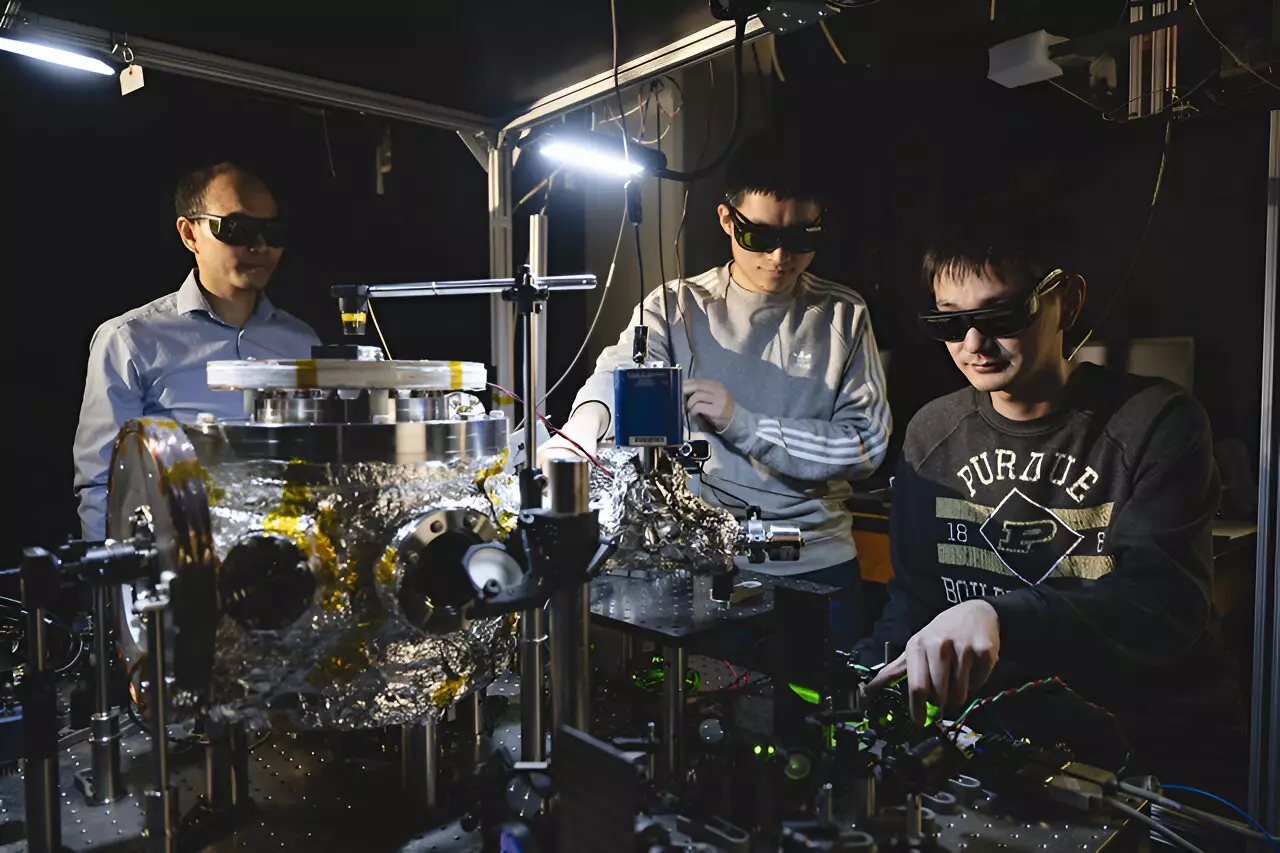At Purdue University, physicists have embarked on a groundbreaking experiment that not only dazzles the imagination but also pushes the boundaries of quantum mechanics. They have introduced a novel approach to studying quantum systems through the astonishing behavior of fluorescent nanodiamonds, which they have successfully levitated and spun within a vacuum. This research explores complex quantum phenomena, including the Berry phase—an intricate aspect of quantum mechanics’s relationship with rotation. Spearheaded by Professor Tongcang Li and his team, this experiment marks a significant leap in our understanding of both quantum physics and levitodynamics.
The Mechanics Behind the Levitation and Rotation
To visualize this experiment, imagine a minuscule disco ball made of a specially synthesized diamond measuring approximately 750 nanometers in diameter. These nanodiamonds are not just visually captivating; they hold electron spin qubits that play a crucial role in the study of quantum mechanics. The team achieved levitation by utilizing a specially designed surface ion trap, set within a high-vacuum environment—a setup previously fraught with challenges. By overcoming these obstacles, they have finally achieved unprecedented control over the spin qubits within the nanodiamonds.
One of the most remarkable aspects of the Purdue team’s research is their ability to rotate the diamonds at staggering speeds—up to 1.2 billion revolutions per minute. This rapid rotation directly affects the spin qubits, allowing the researchers to study the Berry phase in a way that was previously unattainable. The implications of this breakthrough are expansive, offering deeper insights into how mechanical motion interplays with quantum behavior.
Scientifically, the fluorescent nanodiamonds used in this experiment were meticulously produced using high-pressure, high-temperature techniques. The diamonds were subsequently irradiated with electrons to create color centers that house the spin qubits. This method showcases the advanced material science at the foundation of contemporary quantum research, with the characteristics of the diamonds being integral to achieving their current successes.
The experiment also involves a fascinating interplay of light, with green lasers illuminating the diamonds and triggering a response that produces red light. This red light not only serves as an indicator of the state of the spin qubits but also aids in understanding the rotational dynamics of the diamonds. An additional infrared laser is employed to track the orientation and speed of rotation, creating a multi-faceted approach to studying these quantum objects.
The Purdue University team is composed of graduate students and postdoctoral researchers from Li’s group, which demonstrates a collaborative spirit that is essential in cutting-edge research. Yuanbin Jin and Kunhong Shen played pivotal roles in setting up and executing the experiment, while collaborative insights from experts outside Purdue enriched the research process. This blend of ideas and technical expertise underpins the success of their findings, illustrating that interdisciplinary collaboration can lead to groundbreaking advancements in science.
The ramifications of this experiment extend beyond fundamental physics. With applications in designing highly sensitive accelerometers and electric field sensors, this research could potentially transform navigation systems used by industries such as aerospace. The U.S. Air Force Research Laboratory is already exploring how optically levitated nanoscale particles can optimize navigation and communication technologies. This exemplifies how foundational scientific research can lead to tangible advancements in technology and engineering.
In the realm of theoretical investigations, the ability to study quantum gravity experimentally stands out as one of the most tantalizing prospects raised by this research. As Professor Li points out, understanding the quantization of gravity is a quest that continues to elude physicists. The capabilities provided by these levitated nanodiamonds may help bridge the gap between the established principles of general relativity and the enigmatic rules governing quantum mechanics.
Ultimately, the work being done at Purdue University serves as a beacon for the future of quantum science. The unique combination of cutting-edge technology, advanced material science, and collaborative research indicates that humanity is on the cusp of significant breakthroughs. As scientists delve deeper into the complexities of quantum systems and explore novel methodologies like those exemplified by the spinning diamonds, we edge closer to answering some of the most profound questions in physics. The journey ahead promises to be both enlightening and transformative, with the potential for widespread implications across multiple fields.

